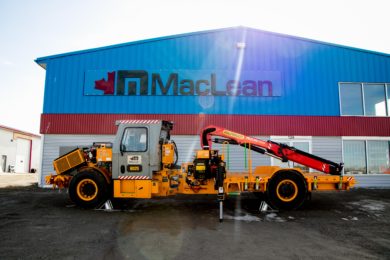Chris Greenwood, Managing Director, at Tan Delta Systems, explains how the latest innovations in oil conditioning monitoring can create major benefits to businesses including positive impacts to the bottom line.
In this current commercial environment businesses are constantly looking for new ways to gain that competitive edge and support their bottom line long term.
Critical need
Sectors such as manufacturing, power, mining, quarrying and logistics might seem quite detached but they are similar in one key way. They all use oil dependent machinery or vehicles with hydraulics, engines, gearboxes and transformers, and need to ensure they are as reliable and productive as can be for business continuity.
With this in mind, it is fundamentally critical for these businesses to conduct regular health and status inspections to achieve operational efficiencies. This is especially important in extreme, and often harsh, climates such as dusty or humid mine sites, or freezing arctic natural gas processing plants, and everything in between.
Maintenance engineers and plant managers often prioritise condition monitoring inspections according to the equipment importance or value, focusing on these first and often overlooking other aspects.
Hydraulics, engines, gearboxes and transformers can all be at risk of even miniscule changes in oil condition which can have a big impact. As oil condition degrades with use or contamination by fuel, water or acid, it can quickly result in oil losing lubrication properties, subsequently leading to equipment damage.
To reduce the risks and costs associated with potential equipment damage, maintenance and plant managers are looking for improved methods of understanding the repair history of equipment, operating characteristics and failure probability. Through understanding this, it is possible to identify prevention measures and obtain substantial cost savings at the same time.
Sensors
Businesses already using condition-based monitoring equipment demand a lot from it, and unfortunately not all sensors are comparable or even able to meet all of the requirements customers expect.
Real-time oil analysis provides important information about equipment wear levels, as well as the condition of the oil itself. Keeping machinery operating at the optimal level involves measuring, monitoring and analysing changes in lubricant and fuel oils for contamination and chemical content.
This data can provide insights into issues affecting performance and reliability, and operators can make cost effective maintenance decisions based upon these oil analysis results.
Therefore, the sensors needed must be highly accurate, with strong performance records in harsh and extreme conditions and be able to continuously monitor, detect and report on any oil quality change. They must be customisable and configurable to many oil types in multiple applications and, of course, be compatible with existing site equipment. What’s more, they must be able to provide real-time information to help pinpoint issues quickly, enabling precision in planning maintenance schedules.
Additional demands come in the form of what the sensors can deliver to the business as a whole: low operating costs, reduced downtime, optimised service intervals and improved safety. Also, knowing they can provide environmental benefits and allow managers to reconsider how they define business critical equipment through the use of intelligent data capture and support intelligent proactive decision making. All factors that contribute to the overall success of a business.
Overlooked − but highly beneficial
Monitoring oil condition across a facility can be easily overlooked due to practicality and the potentially high cost implications. However a ‘run to failure’ approach is fraught with risk, whilst scheduled preventive maintenance is limited in effectiveness, further emphasising the importance of implementing the latest technologies to ensure costly unforeseen issues are avoided.
The cost of such oil condition monitoring sensors is easily covered with the savings achieved from extended machine life, reduced wastage, improved energy efficiency, and, ultimately, satisfied customers.
With benefits like this and the advanced technological developments, it is hard to think why organisations would not be looking to increase their competitive edge and bottom line by employing this technology.










